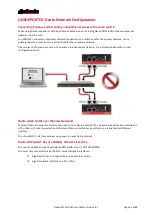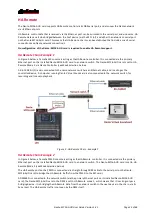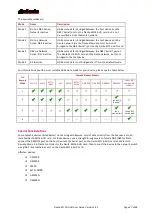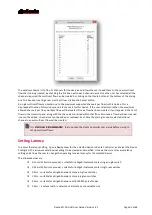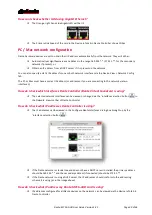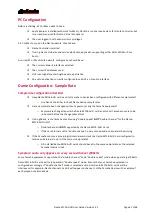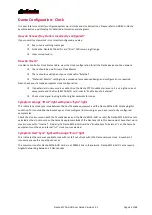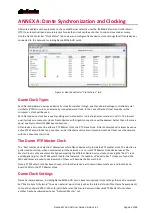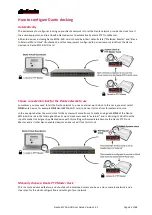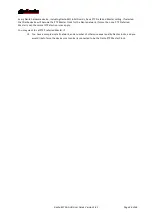
Dante-MY16-AUD User Guide Version 1.41
Page 32 of 46
Dante-MY16-AUD Advanced Configuration with
Dante Controller
Once you have installed Dante-MY16-AUD cards in your Yamaha equipment and connected them to a network you
are in a position to configure your Dante-MY16-AUD card, using a PC or Mac on the network with Dante Controller
installed and running on it.
Some basic functions of Dante Controller have already been described:
Setting up an audio route.
Changing the device name.
Changing sample rate.
Identifying a specific Dante-MY16-AUD card.
Dante Controller can also be used to configure a number of other more advanced features, including:
Adjusting latency settings
Choosing between unicast and multicast modes
Selecting clock sources
Specifying static IP addresses
These are described briefly below. A more complete description of the functions of Dante Controller can be found
in the
Dante Controller User Guide
.
Unicast and Multicast Modes
Dante audio routing creates
flows
. Each flow carries one or more channels of audio from a transmitting device to
one or more receiving devices. There are two types of flow, unicast and multicast.
Unicast routing creates flows to a single receiving device; a unicast flow typically assigns space for 4 channels of
audio. Unicast flows are setup when a receiver subscribes to an available audio channel, and are automatically
removed when the receiver unsubscribes from all channels in that flow.
Multicast routing creates flows that can be received by multiple receivers. Multicast flows are assigned IDs
enabling them to be identified in Dante Controller and to facilitate their removal. In contrast to unicast flows,
multicast flows are setup on the transmitting Dante device.
Dante routing is unicast by default. This means that a separate flow is set up for each pair of transmitter and
receiver. If several receivers are all subscribed to the same channels of a transmitter, it may sometimes be more
efficient to use
multicast
.
Multicast sends the same set of channels to multiple receivers. In practice, this usually means that the audio flow
is flooded throughout the network. If many receivers want the same channels, using multicast ca n reduce overall
network use, especially on the transmitter since only one copy of each audio channel needs to be sent rather than
many. Unlike unicast routing, multicast flows consume network bandwidth even if there are no receivers, but do
not require additional bandwidth to add more receivers.
Dante receivers will automatically prefer multicast to unicast if it is available. This means that if a new multicast
flow is created containing the channels that a receiver is currently receiving as unicast, the receiver will switch over
to receiving audio from the multicast flow and the unicast flow will be removed.
Dante Controller can be used to choose what channels are to be multicast.
Clicking on the Multicast Configuration icon
in the toolbar of the Device View (regardless of which tab view is
currently displayed) will open a
Create Multicast Flow
dialog box that allows the user to select individual channels
to add to a new multicast flow.







